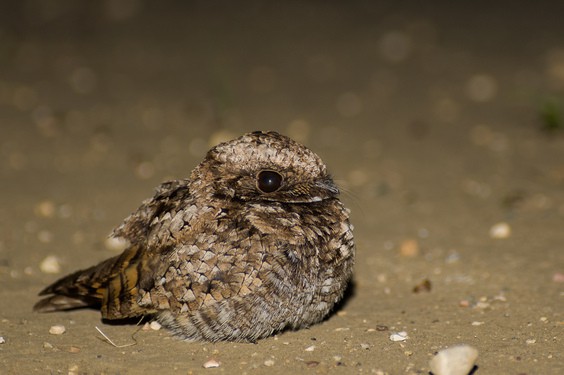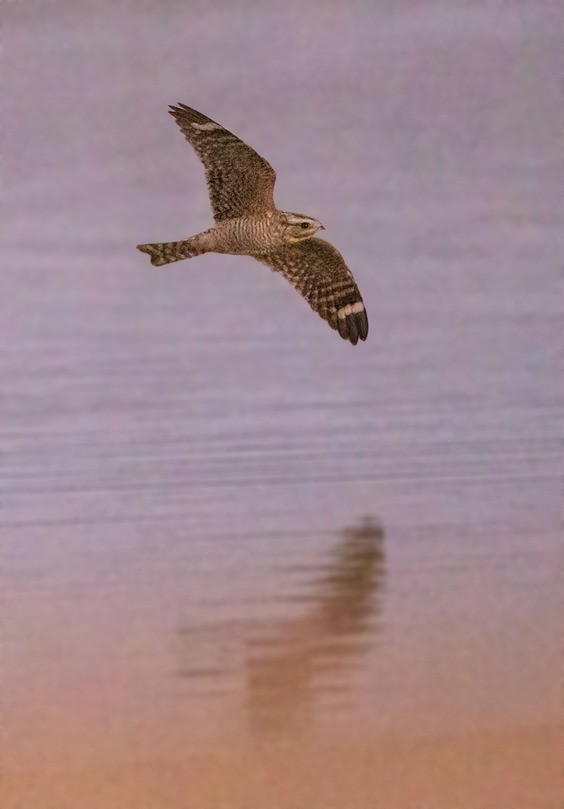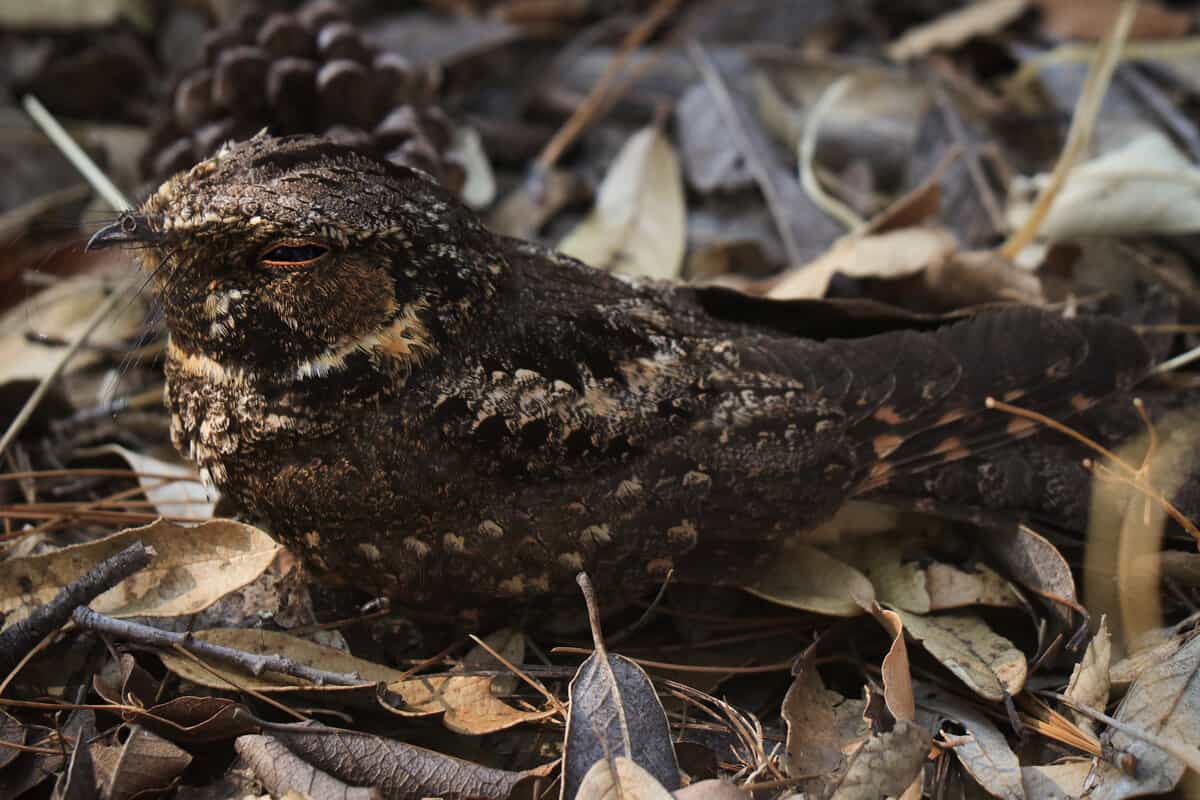By Logan Parker, Nightjar Survey Network & Maine Nightjar Monitoring Project
Nightjars are a group of crepuscular and nocturnal birds known for their mysterious nighttime calls and cryptic plumage. They are a fascinating and enigmatic presence on the varied landscapes of the southwestern United States and northwestern Mexico. From the “sleeping” poorwills of the rocky plateaus to the “trilling” nighthawks of the lowland deserts, these elusive members of the Caprimulgidae family have served as a source of interest and inspiration for centuries.
The southwestern United States and northwestern Mexico are home to several species of nightjar, each with their own distinctive habits and characteristics. Here we will examine three species: Common Poorwill, Lesser Nighthawk, and Mexican Whip-poor-will.

More often heard than seen, the Common Poorwill sings its onomatopoeic “poor-will” song at dusk and on moonlit nights. Known to the Hopi as “Hölchoko” or “the sleeping one”, Common Poorwill make regular use of torpor to contend with adverse weather conditions or reduced food availability. By using this adaptation, they are capable of remaining inactive for weeks at a time. In the southwestern portion of their range, Common Poorwills inhabit a variety of habitats including brushy, arid plateaus and hillsides, Chaparral, and Piñon–Juniper Woodlands.
Time it right and you have a better chance of actually seeing a Lesser Nighthawk. Although they spend their days hidden on the desert floor, these graceful nightjars can be observed foraging for insects in pairs and small flocks during the twilight hours. Like poorwills, these nighthawks are well adapted to contend with extreme temperatures. Nesting Lesser Nighthawks are exposed to intense heat during the day. To prevent themselves from overheating, these birds orient themselves to minimize and maximize sun and wind exposure respectively. Incubating birds will also utilize gular-fluttering (akin to panting in dogs) to regulate their temperature through evaporative cooling.

Visit the wooded hills and mountain sides of Northern Mexico, Arizona, New Mexico, and portions of California on moonlit nights and you might just hear the song of the secretive Mexican Whip-poor-will. Separated from its sister species the Eastern Whip-poor-will in 2010, differences in the two species’ voice and appearance have long been recognized. Its song is lower and coarser than that of its cousin and has a different rhythm. Yet much about the status and biology of this species remains poorly known or unstudied entirely. Indeed, the Mexican Whip-poor-will is considered one of the least studied birds breeding in North America.
As a guild, aerial insectivores have declined precipitously in North America over the last several decades, nightjars included among them. While we have been captivated by their nighttime songs for centuries, their elusive nature has meant vital details about the status of nightjar populations and potential drivers of declines have also eluded us. Declining insect populations, habitat loss from urban development and agricultural expansion, and climate change have all been suggested as likely culprits for declining nightjar populations. There is so much to learn to ensure these entrancing nocturnes are heard for generations to come.
How You Can Help: The Nightjar Survey Network
Assessing the status of our North American nightjar species requires a collective effort. The first order of business is gathering baseline data about the distribution and abundance of nightjars and that requires coordination. Fortunately, the Nightjar Survey Network (NSN) was established for just this purpose and is positioning itself to support expanded nightjar monitoring efforts in the years ahead. Dedicated nightjar monitors in Arizona and California have been steadfast supporters of the NSN, leading the efforts in southwestern United States for more than a decade and gathering critical data on all the species detailed above. Yet, there are still many opportunities to collect valuable data by adopting routes and conducting nightjar surveys in the Sonoran Joint Venture Region and beyond. Visit nightjars.org today to reserve a route and secure your chance to participate in next year’s surveys. You may have the pleasure of hearing these special songs in the dark.

